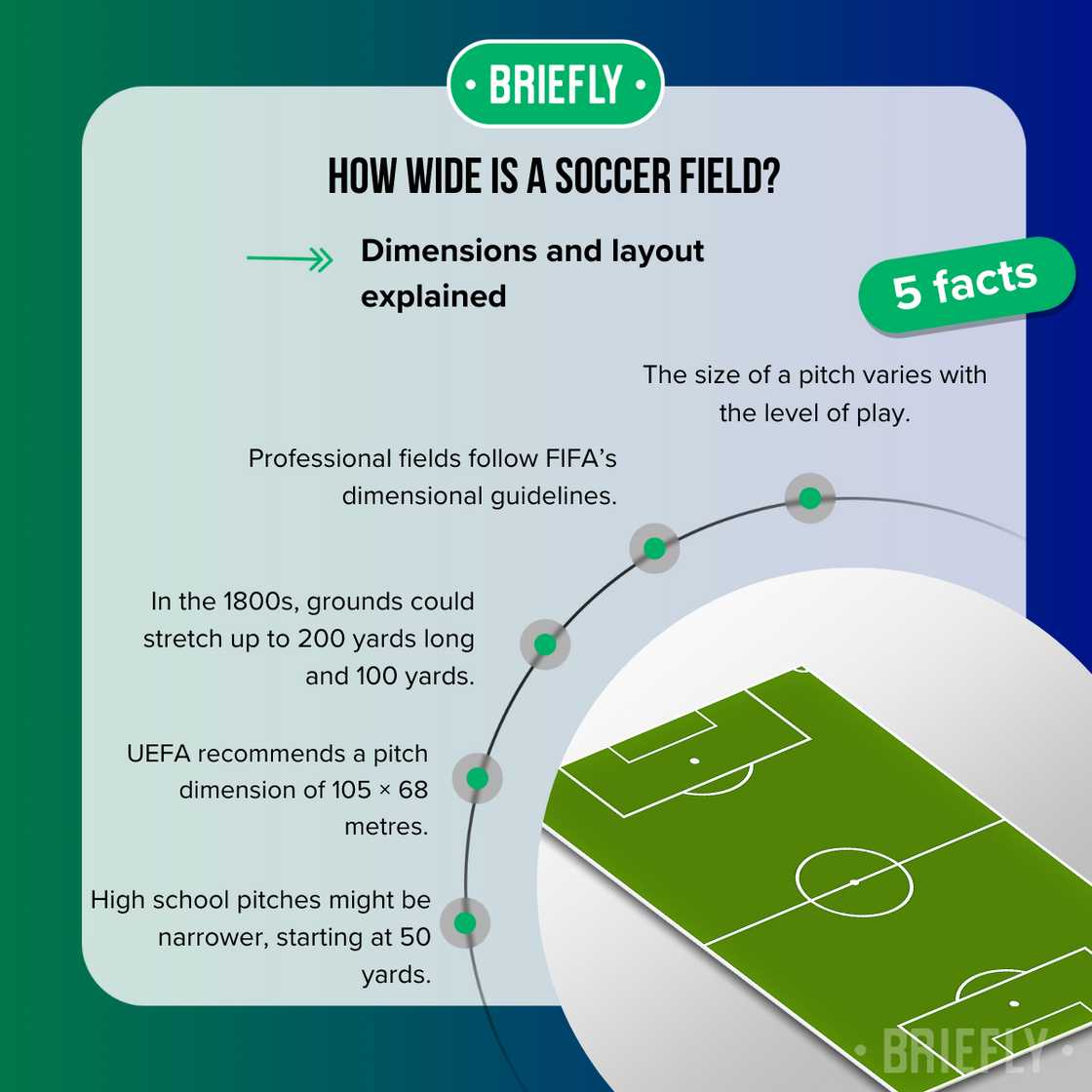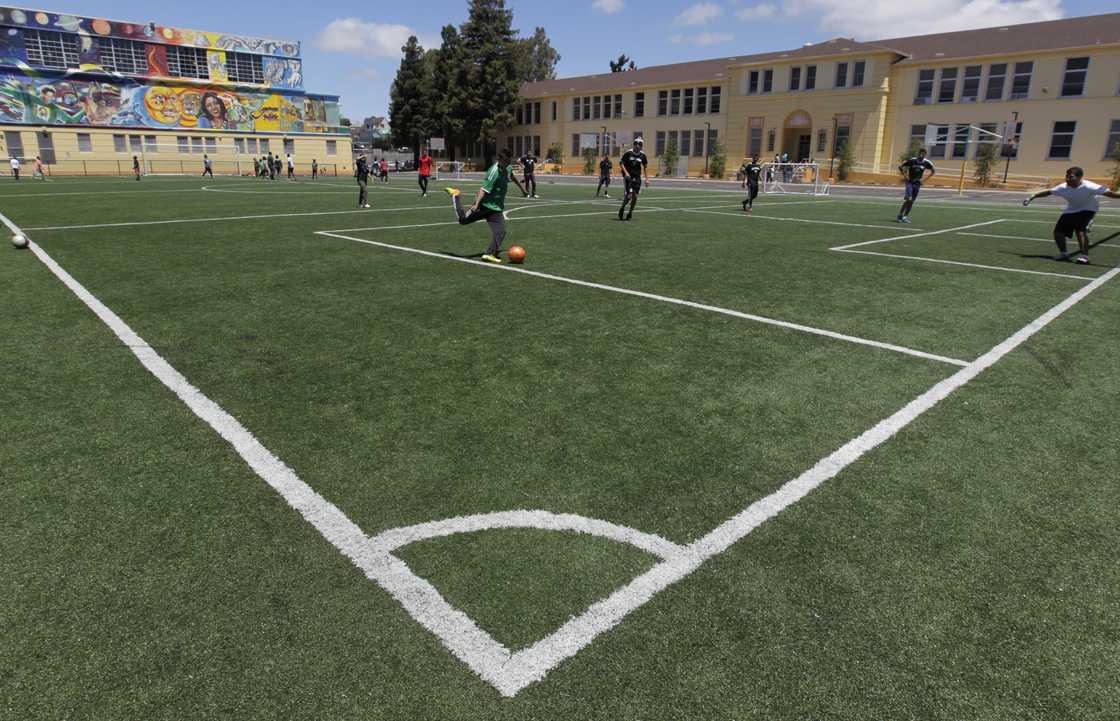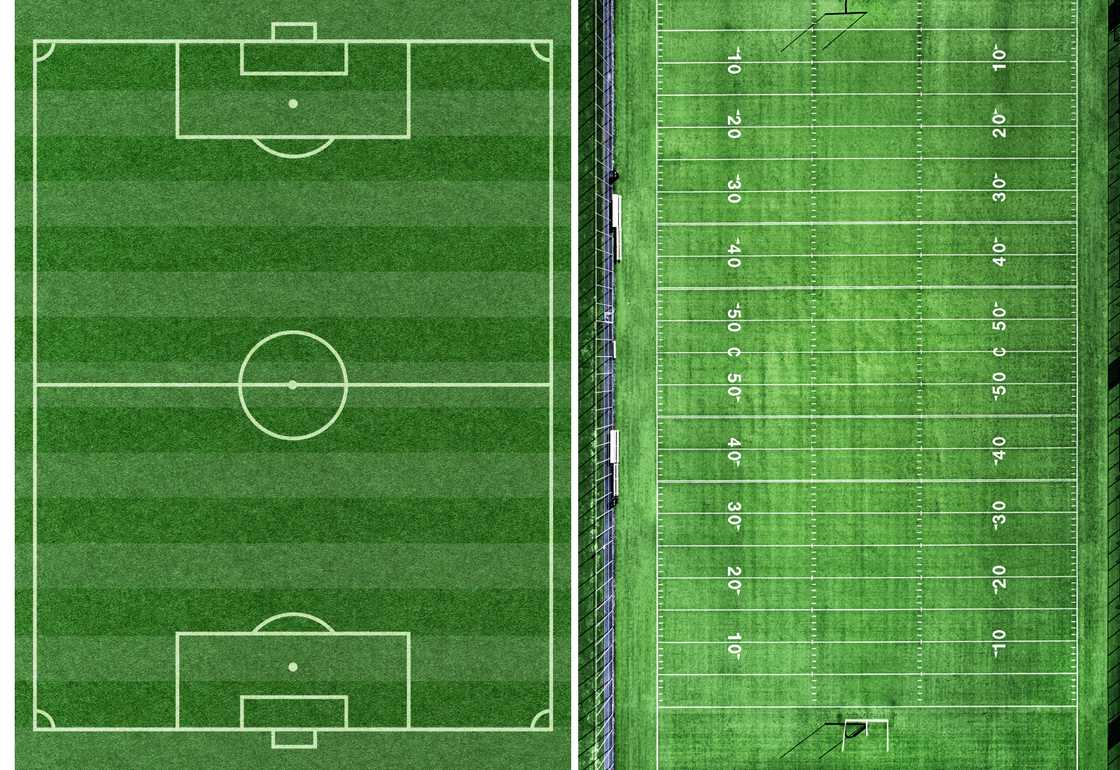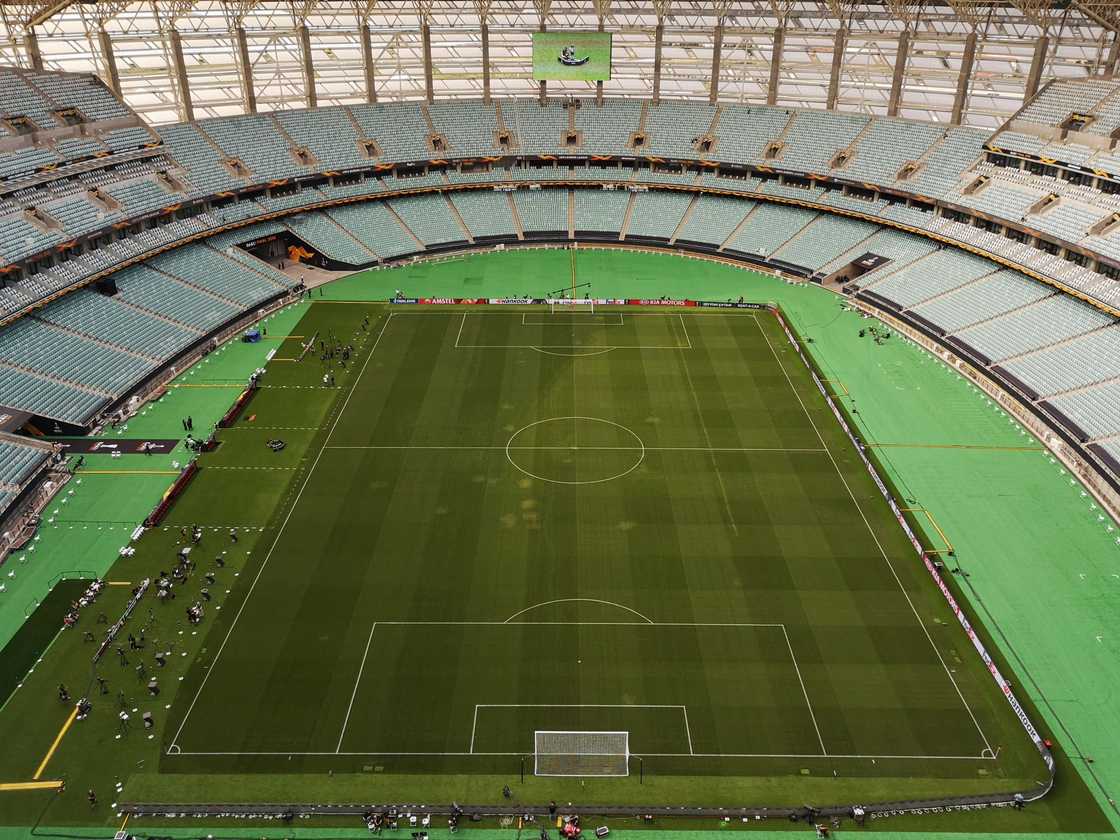How wide is a soccer field? Dimensions and layout explained
Soccer is one of the oldest games, with roots that go back centuries. Today, it is one of the most popular games in the world. But how wide is a soccer field? While many individuals play this game, many may not know the exact pitch measurements.

Source: Getty Images
TABLE OF CONTENTS
Understanding how large a soccer field is can provide vital insights into games and strategy, whether you are a spectator, a coach, or just interested in the sport. Here, we will review the intricacies of field measurements, restrictions at different levels, and comparisons.
How wide is a soccer field?
The width of a pitch varies with the level of play. Professional leagues and international matches often have field widths of 70 to 80 yards. Here is a closer look at different ranges of pitches.
International and professional matches
Pitches are between 70-80 yards wide (64m/210ft to 73.2m/240ft). However, according to the FIFA website, the most suggested distance is 68 metres.
Other levels
High school pitches might be narrower, starting at 50 yards (45 metres) for students aged 15 and 16. Other grounds vary greatly by age group, with the lowest range being 13.7-22.9m for children under 6.

Source: Original
Soccer field dimensions
In the 1800s, grounds could stretch up to 200 yards long and 100 yards broad. Flags were used to designate the borders until 1882 when boundary lines on the turf were enforced.
FIFA soccer field dimensions
Nowadays, to ensure game fairness, the International Football Association Board (IFAB) and FIFA establish specific criteria for both length and width. Here is the breakdown:
- Length: Typically 100-130 yards for club play and 110-120 yards for international matches.
- Width: 50-100 yards for club play and 70-80 yards for international play.
Professional soccer field size
Major League Soccer (MLS), the English Premier League, and World Cup tournaments all comply with FIFA criteria. UEFA recommends a pitch dimension of 105 × 68 metres, which is widely used by elite clubs worldwide.
According to UEFA regulation, the advertising boards should be located an additional 1-3 metres beyond the touchline. Here are some prominent stadiums and the size of their pitches:
- Wembley: 105 × 68 metres
- Maracanã: 105 × 68 metres
- Allianz Arena: 105 × 68 metres
- Camp Nou: 105 × 68 metres
- Tottenham Hotspur Stadium: 105 × 68 metres
- Emirates Stadium: 105 × 68 metres
- Old Trafford: 105 × 68 metres
- Anfield: 101 × 68 metres
- San Siro: 105 × 68 metres
- Stamford Bridge: 103 × 67 metres
College soccer field dimensions
The NCAA sets the rules for college soccer. According to Anthem Sports, the official NCAA literature claims that:
"The field of play shall be rectangular, the width of which shall not be more than 75 yards [68.58 m] or less than 70 yards [64.01 m] and shall not exceed the length. The length shall not be more than 120 yards [109.73 m] or less than 115 yards [105.16 m]".
High school soccer field dimensions
Like many other levels, high school has variable sizes. The National Federation of State High School Associations (NFHS) normally recommends fields that are 55 to 80 yards wide and 100 to 120 yards long.

Source: Getty Images
Soccer pitches for younger players are scaled down further. These changes make the playing experience more manageable.
- Under 8: 23-32 metres in length and 14-23 metres in width
- Under 10: 50-59 metres in length and 32-41 metres in width
- Under 12: 64-73 metres in length and 41-50 metres in width
Soccer field layout
A soccer pitch is divided into numerous critical zones, all of which influence games. The key lines and markers are:
- Goal lines and touchlines: These define the ground's perimeter, ensuring the rectangular shape that is common in soccer.
- Centre circle & centre spot: The centre location on the pitch is located in the middle, on the halfway line. The centre circle has a diameter of 10 yards (9.15 metres) and is marked from the centre spot.
- Penalty area (18-yard box): A key region in front of each goal, measuring 18 yards from the goal line. Inside, the penalty spot is 12 yards from the goal, where penalty kicks are taken.
- Penalty box arc: The penalty box arc, sometimes known as "the D", is located on the far side of the penalty box, opposite the goalposts and goalline. The highest point of the penalty box arc is designated 10 yards (9.15 metres) from the penalty spot.
- Goal area (6-yard box): The goal area is a rectangular region in front of the goalposts where goal kicks are attempted. It is 5.49 metres from the goal line and 18.29 metres wide.
- Corner arcs: There are small quarter circles at each corner of the field. They have a 1-yard radius measured from the base of each corner flag in the field.
Football vs. soccer field key differences

Source: Getty Images
Compared to American football, soccer pitches are larger and wider. Here is how they differ according to Soccer Ball World:
- A soccer field is wider, ranging from 150 to 300 feet, while an American football field is 160 feet wide.
- Soccer goalposts are 24 feet apart with an 8-foot crossbar, whereas American football goalposts are 18 feet 6 inches apart with a 10-foot crossbar.
- Soccer fields are between 300 and 390 feet long, while those for American football are 300 feet long between goal lines.
- Soccer features penalty areas and a centre circle, while football includes yard lines, end zones, and hash marks.
Frequently asked questions

Source: Getty Images
FIFA criteria provide consistency in both professional and international fields, with dimensions that accommodate the game's many tactics and plans. Below are some frequently asked questions about pitch sizes.
- What is the size of the MLS soccer field? The typical MLS soccer pitch measures 330-360 feet long and 210-240 feet wide, following FIFA's recommended dimensions.
- How wide is a Premier League soccer field? Premier League pitches are generally between 64-75 metres wide.
- Are all soccer fields the same size? Their size varies according to the level of play. Youth fields are often smaller, but professional fields aim to maximize FIFA width and length rules.
Understanding the width of a soccer field influences everything from strategy to player fitness, making the layout an important aspect of the game. Whether you are playing or watching, knowing these details will help you appreciate the sport more.
READ ALSO: What is a red card in soccer? Rules, significance, consequences
Briefly published an article about a red card in soccer. While the game frequently honours moments of brilliance and teamwork, it also has rigid regulations that assure fairness, discipline, and respect.
It is a potent symbol used by referees to punish players for significant wrongdoing. This post explores the definition of a red card, how it differs from a yellow card, and the ramifications for players and teams.
Source: Briefly News






